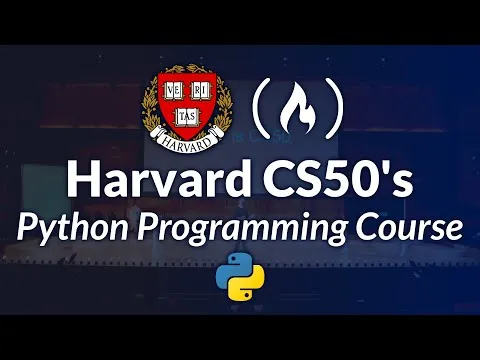
Introduction to Java 
ADVERTISEMENT
Course Feature
![]() Cost:
Cost:
Paid
![]() Provider:
Provider:
Cybrary
![]() Certificate:
Certificate:
Paid Certification
![]() Language:
Language:
English
![]() Start Date:
Start Date:
On-Demand
Course Overview
❗The content presented here is sourced directly from Cybrary platform. For comprehensive course details, including enrollment information, simply click on the 'Go to class' link on our website.
Updated in [May 19th, 2023]
Introduction to Java is a course designed for beginners with no programming experience. It provides an overview of the Java programming language and its use in modern-day jobs. The course covers topics such as object-oriented programming, the benefits of Java, and how to install and use the Java 8 SDK and IntelliJ Community Edition. It also provides guidance on how to become Java certified and the advantages of doing so. By the end of the course, students will have the knowledge to start building their own applications.
[Applications]
Upon completion of this course, students will have the knowledge and skills to apply the concepts of Java programming to create their own applications. They will be able to use the Java 8 SDK, IntelliJ Community Edition, and other tools to develop their applications. Additionally, they will be able to understand the importance of being Java certified and how it can help them land their dream job.
[Career Paths]
Recommended career paths for learners of this course include:
1. Java Developer: Java developers are responsible for developing and maintaining applications using the Java programming language. They must have a strong understanding of object-oriented programming principles and be able to write efficient code. The demand for Java developers is increasing as more companies are looking to develop applications using the language.
2. Mobile Application Developer: Mobile application developers use Java to create applications for mobile devices. They must be familiar with the Android SDK and be able to write code that is optimized for mobile devices. The demand for mobile application developers is growing as more companies are looking to create applications for their customers.
3. Web Developer: Web developers use Java to create websites and web applications. They must be familiar with HTML, CSS, and JavaScript and be able to write code that is optimized for the web. The demand for web developers is increasing as more companies are looking to create websites and web applications.
4. Software Engineer: Software engineers use Java to create software applications. They must be familiar with object-oriented programming principles and be able to write efficient code. The demand for software engineers is increasing as more companies are looking to develop software applications.
[Education Paths]
Recommended Degree Paths:
1. Bachelor of Science in Computer Science: This degree path provides a comprehensive overview of computer science, including programming languages, software engineering, and computer architecture. It also covers topics such as artificial intelligence, data structures, and algorithms. This degree path is ideal for those who want to pursue a career in software development and programming.
2. Master of Science in Computer Science: This degree path is designed for those who want to specialize in a particular area of computer science, such as software engineering, artificial intelligence, or computer networks. It provides a deeper understanding of the fundamentals of computer science and allows students to develop their skills in a specific area.
3. Bachelor of Science in Information Technology: This degree path focuses on the application of technology to solve business problems. It covers topics such as database management, web development, and network security. This degree path is ideal for those who want to pursue a career in information technology.
4. Master of Science in Information Technology: This degree path is designed for those who want to specialize in a particular area of information technology, such as software engineering, data analytics, or network security. It provides a deeper understanding of the fundamentals of information technology and allows students to develop their skills in a specific area.
Developing Trends:
1. Cloud Computing: Cloud computing is becoming increasingly popular as businesses move away from traditional on-premise solutions. This trend is driving the need for developers who are skilled in cloud technologies such as Amazon Web Services, Microsoft Azure, and Google Cloud Platform.
2. Artificial Intelligence: Artificial intelligence is becoming more prevalent in many industries, from healthcare to finance. This trend is driving the need for developers who are skilled in AI technologies such as machine learning, natural language processing, and computer vision.
3. Internet of Things: The Internet of Things (IoT) is becoming increasingly popular as businesses look to leverage connected devices to improve their operations. This trend is driving the need for developers who are skilled in IoT technologies such as embedded systems, wireless communication, and data analytics.
Course Syllabus
Module 1: Introduction to Java
1.1 Introduction to JavaModule 2: Classes in Java
1.2 Setting up Your Programming Environment (IDE)Module 3: Control Flow/Structures
1.3 Creating Your First Java Program Part 1Module 4: Methods
1.4 Creating Your First Java Program Part 2Module 5: Object-Oriented Programming
1.5 Data Types and VariablesModule 6: Encapsulation
1.6 Accepting User InputModule 7: Abstraction
1.7 Basic ArithmeticModule 8: Inheritance
1.8 Small Tax Program Part 1Module 9: Polymorphism
1.9 Small Tax Program Part 2Module 10: You Made It!
2.1 Introduction to ClassesCourse Provider

Provider Cybrary's Stats at AZClass
Discussion and Reviews
0.0 (Based on 0 reviews)
Explore Similar Online Courses

Basics of e-Commerce

Data Migration to SAP S&4HANA

RDBMS PostgreSQL

Intro To PostgreSQL Databases With PgAdmin For Beginners

PostgreSQL: Client Applications

Mastering SQL using Postgresql

Database Design and Basic SQL in PostgreSQL

PostgreSQL: Advanced Queries

Spatial SQL with Postgres : A language for geographers

Learn SQL Using PostgreSQL: From Zero to Hero

PostgreSQL Essential Training


Start your review of Introduction to Java